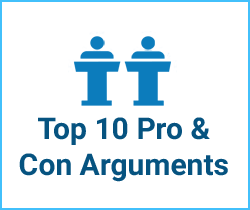What is the Prevalence of People with Same-Sex Attraction?
General Reference (not clearly pro or con)
Gary J. Gates, PhD, Senior Research Fellow at the Williams Institute of the University of California at Los Angeles (UCLA) School of Law, wrote in his Dec. 7, 2007 letter to the Los Angeles Times titled “I Demand a Recount”:
“The best data that we have in this regard [are that] about 4% [of the U.S. population] are willing to identify as lesbian, gay or bisexual on surveys. That’s 8.8 million Americans…
Further, of the 8.8 million Americans who identify as LGB [lesbian, gay, or bisexual], nearly half identify as bisexual, most of whom surveys show are not living with a same-sex partner. That means there are about 4.4 million Americans who call themselves gay or lesbian, of whom about 1.6 million, or more than 36%, are living with a same-sex partner.”
Dec. 7, 2007
Nigel Dickson, et al., Senior Lecturer and Co-Director of the New Zealand Paediatric Surveillance Unit at the University of Otago Medical School, reported the following in their Apr. 2003 paper “Same-Sex Attraction in a Birth Cohort: Prevalence and Persistence in Early Adulthood,” published in Social Science & Medicine:
“By age 26, 10.7% of men and 24.5% of women reported being attracted to their own sex at some time.
This dropped to 5.6% of men and 16.4% of women who reported [about 30 years later] some current same-sex attraction.
Current attraction predominantly to their own sex or equally to both sexes (major attraction) was reported by 1.6% of men and 2.1% of women. Occasional same-sex attraction, but not major attraction, was more common among the most educated.
Between age 21 and 26, slightly more men moved away from an exclusive heterosexual attraction (1.9% of all men) than moved towards it (1.0%), while for women, many more moved away (9.5%) than towards (1.3%) exclusive heterosexual attraction.
These findings show that much same-sex attraction is not exclusive and is unstable in early adulthood, especially among women.”
Apr. 2003
Matthew Pruitt, PhD, Assistant Professor of Sociology at Western Kentucky University, noted the following in his Apr. 30, 2002 article “Size Matters: A Comparison of Anti- and Pro-Gay Organizations’ Estimates of the Size of the Gay Population,” published in the Journal of Homosexuality:
- “It is truly anyone’s guess what percentage of the gay population would be willing to admit same-sex attraction.
- While most pro-gay groups suggest that approximately ten percent of the population is gay, anti-gay groups argue that only 1-3 percent of the population is gay.
- While some have speculated that a set percentage of the world’s population is gay cross-culturally and historically, others have argued that homosexuality is a social construction and, therefore, variant over time and across different societies.
- Until recent research suggested otherwise, 10 percent was the most widely known and commonly cited answer to the question regarding the proportion of the population that is gay. It is generally believed that the 10 percent estimate comes from Kinsey’s studies of sexual behavior in men and women.
Apr. 30, 2002
- [Recent] researchers find that the percentage of the population that would be characterized as gay varies slightly by sex and somewhat according to whether one is measuring behavior, identity, or desire. The 1-3 percent estimate comes from measures of both self-described identity and having some same-sex behavior within the last year. Higher estimates are found when considering any same-sex behavior within the last five years or when examining measures of sexual desire.”


